Visiting Arhat Halls
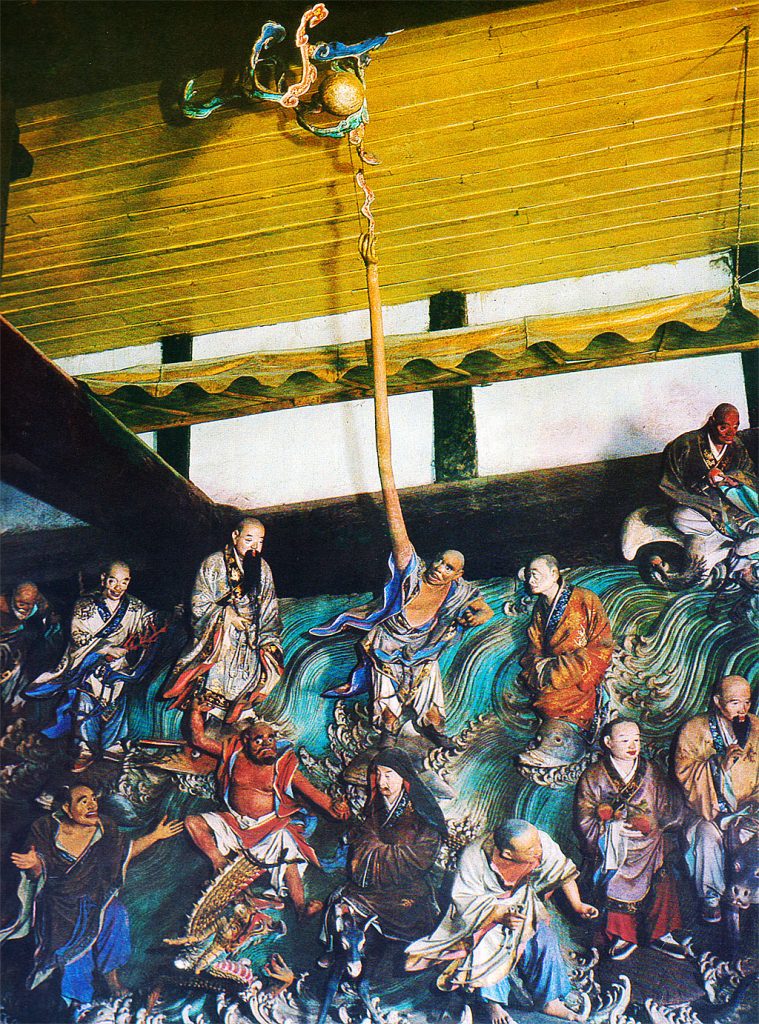
Qióngzhú Sì Bamboo Temple: I love visiting the Arhat Halls in Chinese temples; halls filled with amazing figures and painted with scenes from the supernatural. Arhats, or 羅漢 Luóhàn in Chinese, are often defined as beings who have gained insight into the true nature of existence and have achieved nirvana.
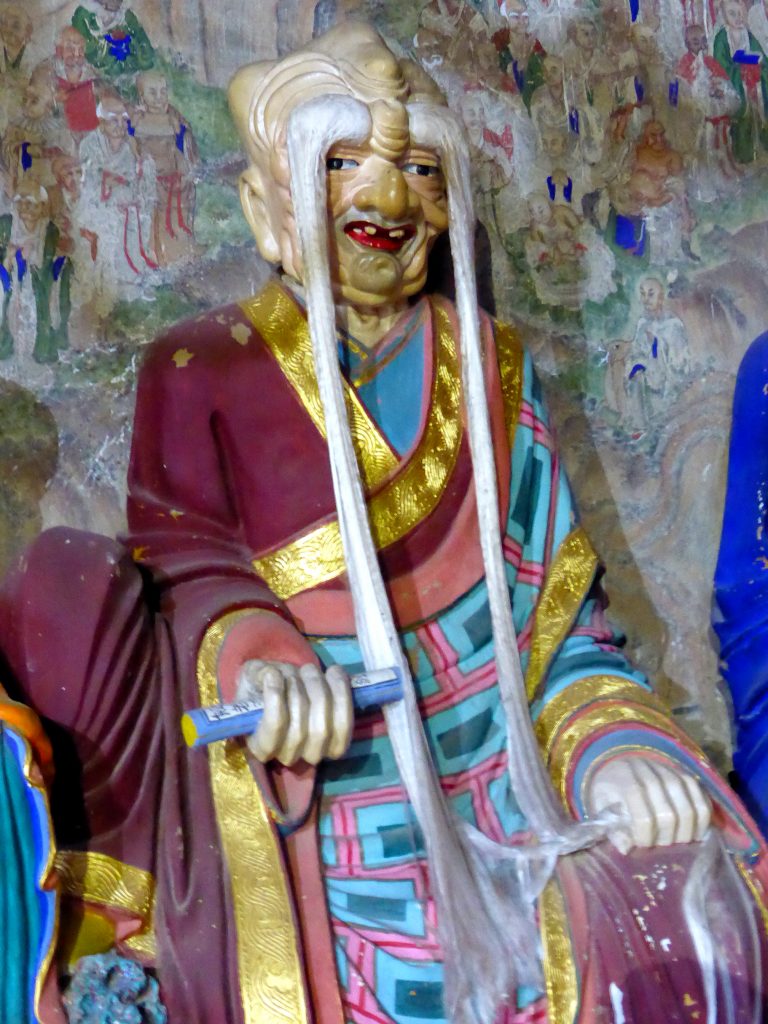
Qióngzhú Sì 筇竹寺 Bamboo Temple Kunming: Are these the world’s best Arhats?
The Qióngzhú Sì Bamboo Temple is home to what is probably the most amazing collection of Arhats in the world. And if you are visiting Kunming, looking up the Arhats is a ‘must’!

Although Arhats line the walls of many Chinese temples, you’ll fine some of the most stunning examples in the 筇竹寺 Qióngzhú Sì, on the outskirts of Kunming, Yunnan Province.

The temple’s famous Arhat Hall was built between 1883 and 1890 and includes 500 individual, painted clay Arhat sculptures 五百罗汉 Wǔbǎi Luōhàn by Li Guangxiu, a folk artist from Sichuan province.
Arhats are usually depicted in groups of 16, or 18 and less frequently in such a large number as 500.
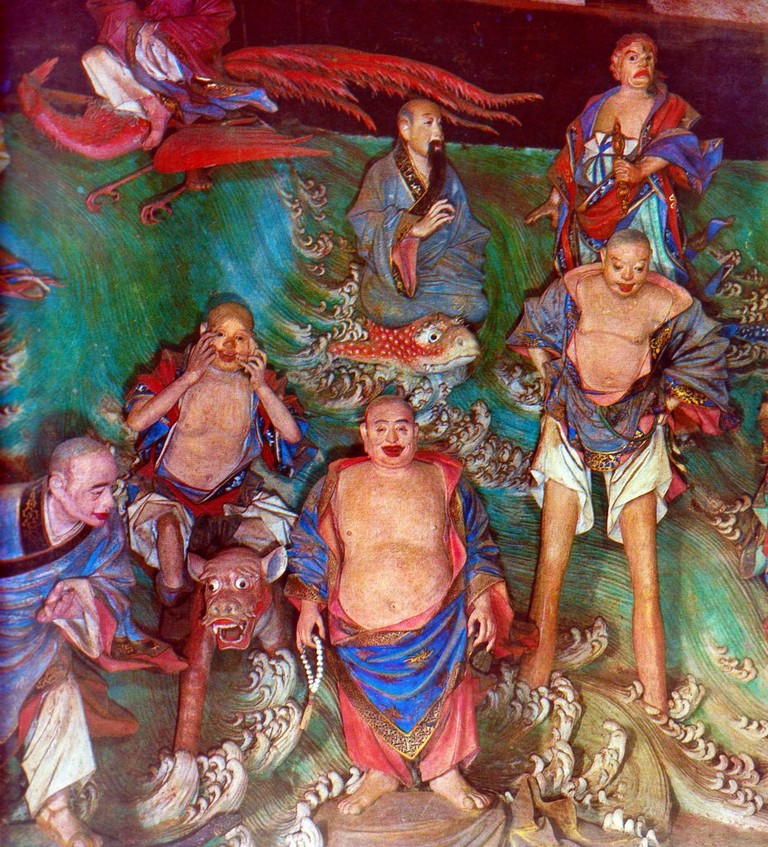
Qióngzhú Sì Bamboo Temple: The Arhats
Among the one-metre tall sculptures, there are Arhats reaching for the Heavens with exaggeratedly long arms and others crossing the seas on stick-like legs; there are pensative, serious Arhats and jolly ones; there are bare-bellied chubby Arhats and others that are sceleton-thin.

When you are in front of the Arhats, staring at their true to life faces, it is inevitable to speculate about who their creator was basing them on, and whether they were real characters who existed in the artist’s lifetime, or just a figment of his imagination. And some imagination that must have been!

The Arhats are remarkable for the riot of colours enveloping them; memorable for the individual expressions on their faces and mind-blowing for the bizarre mystical scenes in which they are placed.
In the light of China’s long history, these Arhats are relatively recent creations, yet their lifelike facial expressions, their clothes, the backgrounds and the colours, all take you back to China’s mythical past and conjure up the West’s romantic ideas of all things exotic and Chinese.

Qióngzhú Sì Bamboo Temple: the China of my Imagination

For me personally, an Arhat Hall represents the China I imagined as a kid, after visiting the Chinese Galleries at in the British Museum, ore reading one of the stories in my book of Chinese Tales.
The universe of the Arhats is the China I imagine when I read such epic stories as Journey to the West 西遊記 Xī Yóu Jì, or Romance of the Three Kingdoms 三国演义 Sānguó Yǎnyì.

Of course, this romantic vision of ancient China is a far cry from the reality of the country’s historical past; a tumultuous history of 5000 years full of brutality and oppression, wars and conquests, famine, drought and floods.

This other, much harsher China, is vividly described in much more contemporary novels such as Su Tong‘s Binu and the Great Wall (a love story set against the background of all the hapless labourers conscripted into building the Wall), or Mo Yan‘s Big Breasts and Wide Hips (a sweeping family saga that spans over 30 years of wars, occupation, revolution and political upheaval).

Qióngzhú Sì Bamboo Temple: a Moment of Peace
Nevertheless, for a few moments when I gaze at the Arhats in front of me, I am transported back to that dreamworld of China’s fantastical past; the China of its great mythical novels.

It is clear that the Bamboo Temple’s Arhat Hall is the creation of an artist at the height of his artistic powers; an artist whose unbridled imagination has run wild. And that is why this is our all time favourite Arhat Hall. Don’t miss it if you are in Kunming! Below are the accounts of our two visits to the temple.

February 1991 and August 2010: Two Visits to the Bamboo Temple, 筇竹寺, Qióngzhú Sì
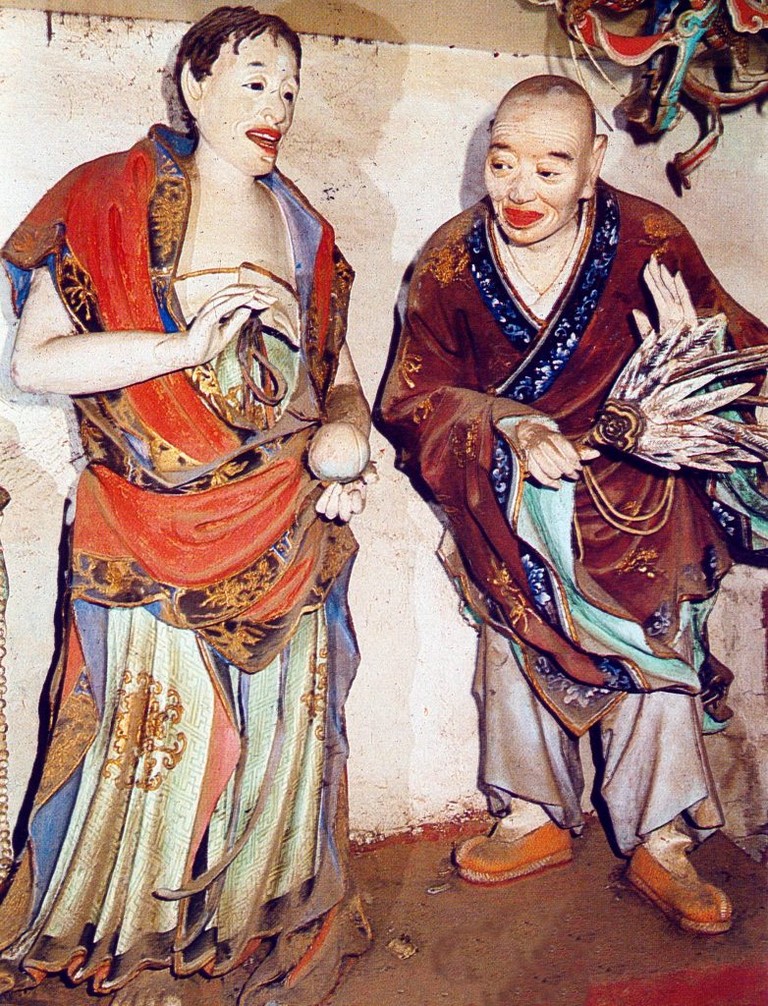
Getting There in 1991
In 1991, you picked up a clapped out overcrowded bus in downdown Kunming and within a few minutes you had already reached the outer limits of the city. After that, the bus slowly trundled past verdant green rice paddies and along pot- holed roads, before eventually ascending through the lush forest to the temple.

Getting There in 2010
Despite China’s modernization, it still takes almost as long to get from downtown Kunming to the Bamboo temple as it did way back in 1991.

Today, there are no green fields, just kilometer upon kilometer of monotonous suburbs and snarling traffic that holds up the comfortable modern bus. Only the last two kilometers of the ascent through the forest brought back any memories of our previous trip.

Mayhem in 1991
I remember the mayhem from our visit back in 1991. In those days, Chinese visitors used to come on organised outings with their Danwei (work group). Men and women alike, were dressed uniformly in blue Mao suits.

As soon as they arrived, they would try and fight their way to the front of the hall in order to touch, or throw coins at the Arhats. It was quite a sight watching the hordes clamber over each other to get to the Arhats!
The incredulous, and at the same time resigned expressions, on the faces of the caretaker monks said it all.
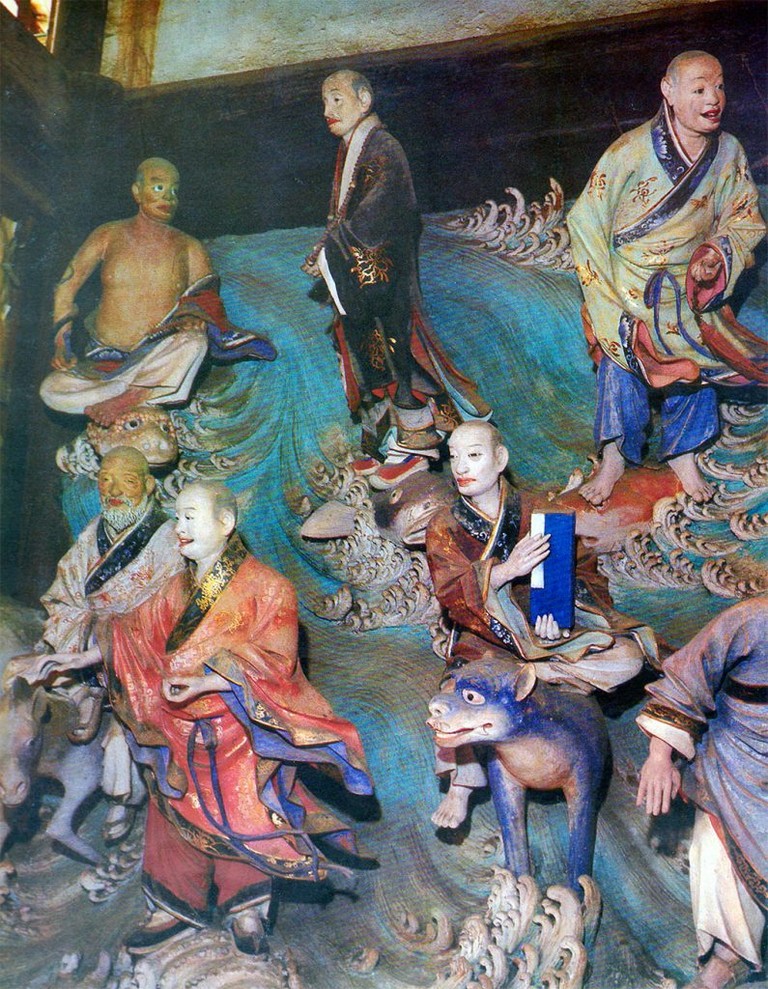
There also used to be snack stalls and tacky souvenir vendors around the temple. Most of them (if not all) have gone now. The area is actually quite serene, given that this is one of Kunming’s highlights.

2010: (Domestic) Tourists Can No Longer Enter the Arhat Hall
As I mentioned before, the situation around the temple ix much more relaxed and organised now. Chinese domestic tourists still come in large groups, but on air-conditioned tourist buses. They are then disgorged from the buses and unleased upon the temple; a few selfies later they return to their waiting vehicles and move on to their next destination.
The Difference Now
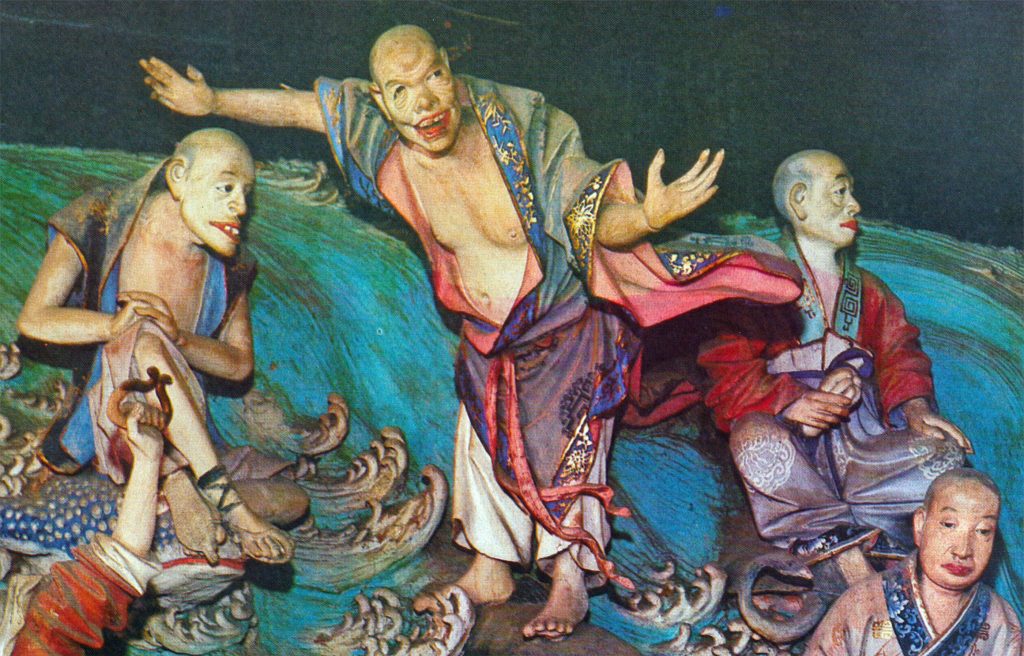
However, there is one more important difference: due to their past unruly behaviour, especially throwing coins at the Arhats and patting them on the head for good luck, the monks do not let (Chinese) visitors enter the Arhat Hall anymore. Instead, the sculptures must be contemplated from a safe distance. This may explain why the Bamboo temple is actually far more sedate than it was 30 years ago.
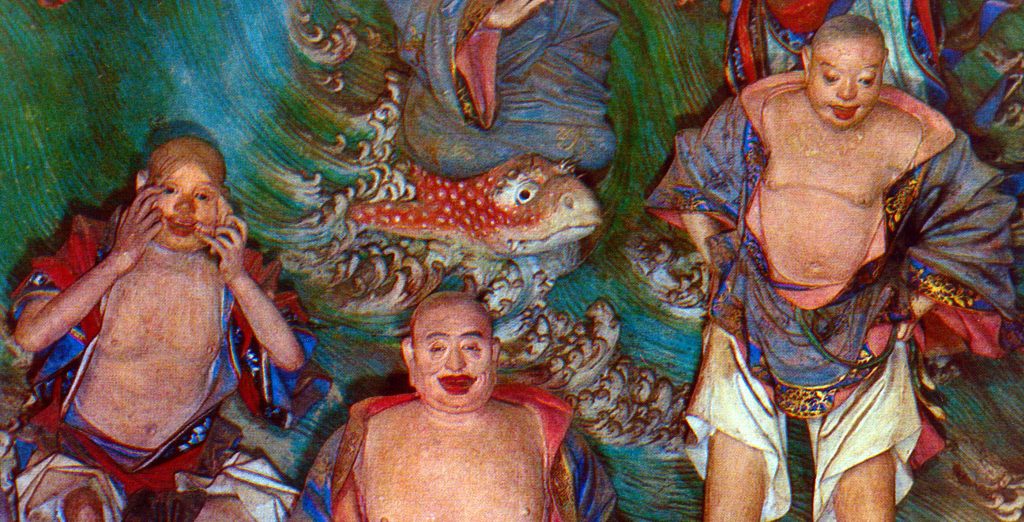
If you are a foreigner travelling on your own or in a small group, chances are that the caretaker monks will turn a blind eye, or even directly invite you into the hall (which is what happened to us), as long as there are no tour groups nearby. Just be discrete about it and remember, no photography allowed! Enjoy!
The Vegetarian Restaurant

When you have gazed at the Arhats enough, you can have a delicious meal at the vegetarian restaurant, or sip a cold beer in its lovely garden and watch the huge resident tortoises roam around the grass.

What more could you want?

How does the Qióngzhú Sì compare to other Arhat Halls?

Not all Arhat Halls are the Same!
In some temples, the Arhats can be simple, almost monotonously similar, and painted in one colour; often gold.

Was the Artist Hallucinating?
However, other Arhat Halls are such an exuberance of colour and fanciful scenes that it makes you wonder what the artists might have been taking when they created them.
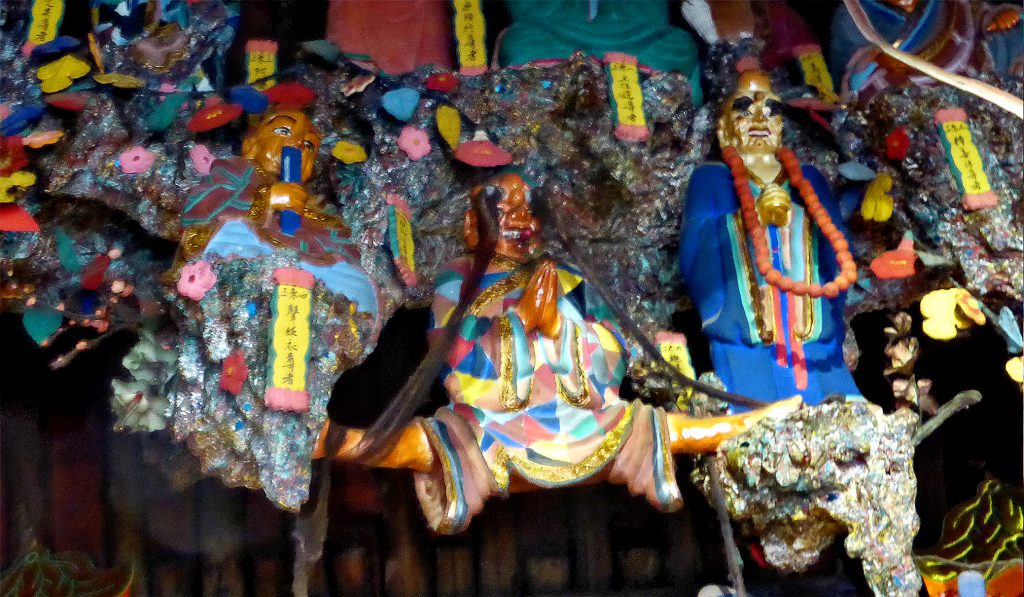
The Jinge Temple 金阁寺 in Wutaishan is a good example of this.
